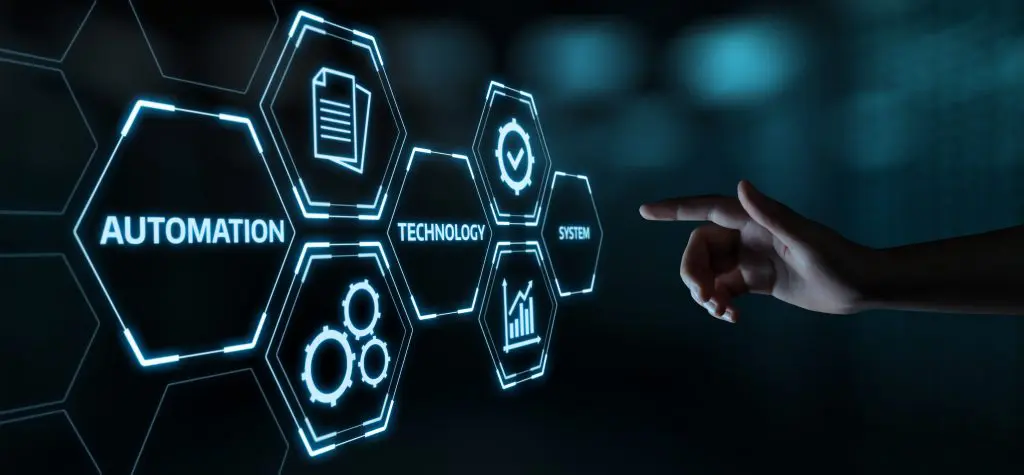Scott Reviews Gartner’s Top Tech Trends for 2021

Scott Reviews Gartner’s Top Tech Trends for 2021
Gartner recently released their Top 10 Strategic Technology Trends for 2021, calling them “Technology trends IT can’t afford to ignore”. Many of the trends are in response to the remote working shift the pandemic has created. Not just Gartner, but many other tech prognosticators are seeing this as a continued shift in how we work.
Brian Burke, research vice president at Gartner says, “What we’re talking about with the trends is how do you leverage technology to gain the organizational plasticity that you need to form and reform into whatever’s going to be required as we emerge from this pandemic?” Organizational plasticity reminds me of the remade Disney movie, Flubber, with Robin Williams. I’m not sure that is what Burke had in mind. Whatever words you use, agility, adaptability, or the ability to pivot (I am growing tired of this one.), being able to adjust to our changing world is of heightened importance. We were already in massive innovation cycle with the need to take on change higher than ever before.
Gartner groups their trend predictions into three themes – people centricity, location independence, and resilient delivery. Their prediction is that these trends will impact organizations in a big way over the next five years.
Here is my summary of their Top 10:
1. Internet of Behaviors – This trend, creatively named to follow the IoT acronym, is about your digital persona. To be frank, it’s full of privacy issues and more than a little Orwellian. The idea is that we are leaving digital dust as we interact with systems and technology, and this digital dust will be collected into an IoB profile that is stored about you. This could be thermal imaging of your temperature, camera images that know if you are wearing a mask, location tracking, and other “big data” from whatever technology interactions you have. This may seem a little hard to believe, but China is already doing this by tracking statistics on their people through phone and app usage, social media, and other interactions. This tracking impacts individuals and their ability to gain credit. Gartner predicts that by 2025, 50% of the population will have some sort of IoB profile.
2. Total Experience or TX – Total experience is the concept that interactions with company resources and data should no longer be separated into customer experience, employee experience and user experience. Rather, they should be handled as one total experience, allowing mobile, virtual and distributed access. By combining these experiences into one strategy, there is a single point of innovation. The example Gartner uses is one of a telecommunications company that setup an appointment system via an app, then made it location aware. Whenever a customer was within 75 feet of the store, they received information guiding them through check-in. They would then get an update for how long it would take before they could enter the store maintaining social distancing. They also set up employee’s devices to “co-browse” customer’s devices on request allowing “no-touch” service. Gartner predicts that organizations that move to this TX methodology will outperform competitors over the next three years.
3. Privacy-Enhancing Computation – This trend is a three-part process for protecting data while it is being used. As big data grows, collaboration on large data sets is needed. It allows for a trusted environment, distributed processing, and encryption to secure this data, and yet make it accessible and shareable without compromising security. Not too exciting, unless you are a data analyst, but necessary as data sets and analytics grows.
4. Distributed Cloud – According to Gartner, distributed cloud is the future of cloud, and I would agree. This technology allows cloud services to be distributed physically closer to organizations, reducing latency, data costs, and meeting compliance requirements that data be stored in a particular geographic area (ex. Continental US). It allows the data to be brought to a variety of locations with the public cloud provider still the single point of management, governance, and operation. We will see how this trend progresses, but a hybrid model that in fact even allows mixed local storage is needed for the cloud to be effective for many organizations.
5. Anywhere Operations – This trend was accelerated by COVID, and is really an extension of the remote working, contactless, virtual world we are living in. Gartner predicts this will continue and grow. Many organizations will be born or transition to digital only. For some organizations, there will be no physical space, but rather a virtual network of people conducting business. In other cases, there will be physical space, but most business is conducted virtually. For instance, there may be a physical store or pickup location, but with contactless checkout. Though this model seems very real to all of us after what we have been through this year, we still all crave interacting with others. It will be interesting to see how this plays out over time.
6. Cybersecurity Mesh – The idea of cybersecurity mesh is interesting and challenging at the same time. Until recent years, most of cybersecurity has focused on how to protect our networks within each of our locations. The firewall between each location and the Internet has been the perimeter. There has been a lot of discussion in recent years about the new perimeter being the person or worker. This has been driven by the bring-your-own-device (BYOD) trend, as well as remote working. With the sudden explosion of people working from home, the concept of Cybersecurity Mesh is making the perimeter the person or the remote location, and it is a more distributed focus on cybersecurity. People from banks and financial advisory offices are now working from home, and the concept is to provide the same security by focusing on the person, rather than where they are. This is a complex and emerging area.
7. Intelligent Composable Business – The concept of ICB is just making a business extremely adaptable based on the situation. The idea is to intentionally structure business to have the agility to adapt to the circumstances. The focus is to move away from the old means of doing business and place even more emphasis on digital transformation. An organization who has structured itself to do business digitally with automated workflows, digital forms, web-based interactions, with very little reliance on paper, minimal manual processes, and reduced human direction is far more adaptable to change. This trend is somewhat a restatement of what is already happening with digital transformation, and further underlines its importance.
8. AI Engineering – Artificial Intelligence is everywhere, but has often been dealt with as a one-off project. This trend is the moving of AI to the mainstream within an organization. It makes AI part of the engineering, innovation, and governance. This is significant because it reflects the integration of AI into many organizations in less of a “test mode”. AI is maturing and producing significant results and this trend underlines that fact.
9. Hyperautomation – According to Gartner, “Many organizations are supported by a “patchwork” of technologies that are not lean, optimized, connected, clean or explicit.” Hyperautomation is the idea or trend that everything in an organization should be automated. Many of the legacy unconnected systems in organizations are holding them back and automating them produces significant results. Automating from production to back-office processes is more important than ever before!
What does all this mean to us here in the Midwest, working in the manufacturing, construction, professional services, or financial sectors? Well first of all, I hope it means that we will still hold to our strong Midwest values, friendly outlook, and hard work. With that said, these trends are already impacting us, and many of us are already growing and adapting. The impact of exponential innovation is here, and it will continue to drive change in our world at a rapid pace. Let’s wisely learn and grow and accelerate on the path of continuous improvement.
Gartner Article: https://gtnr.it/3jPesba

Scott Hirschfeld is the President of CTaccess, a Brookfield IT support company that has been helping businesses stop focusing on IT and getting back to doing business since 1990. Under his leadership CTaccess provides the business minded approach of larger IT companies with the personalized touch of the smaller ones. Connect with Scott on LinkedIn.
